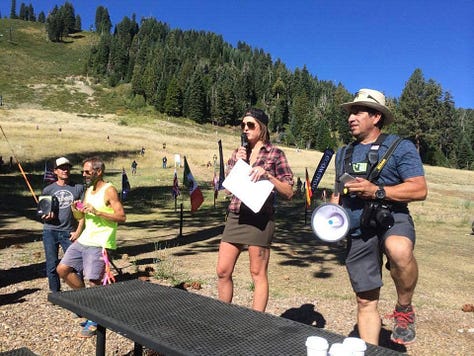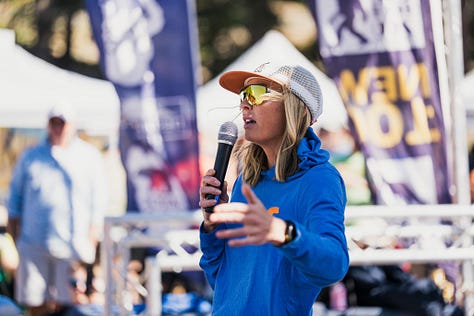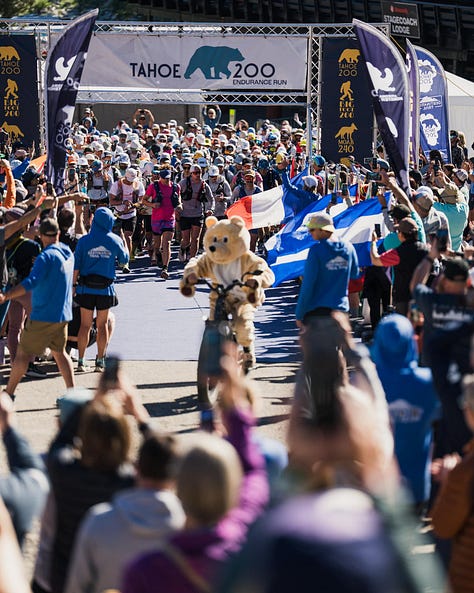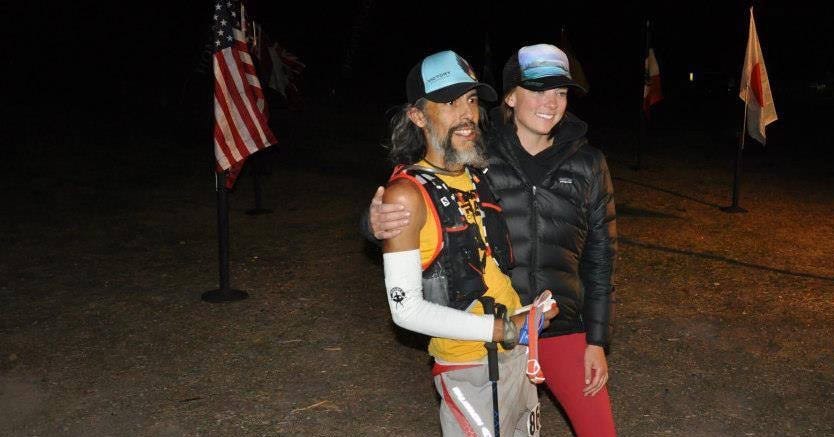The Race that Started it All
In 2014, the Tahoe 200 redefined ultrarunning — the first 200-miler run like a true ultra: one continuous, non-repetitive route that pushed every limit, including mine as Race Director.






The year was 2014, and no one in the United States had ever lined up for a 200-mile race like this. The Tahoe 200 wasn’t a looped track or a back-and-forth grind. It was a single, sweeping, non-repetitive route around the largest alpine lake in North America, climbing and dropping through endless miles of mountains, forests, and thin air. With a cut-off of over four days, more than triple the cut-off for most 100-milers and double that of the toughest races like the Hardrock 100, it would take runners into uncharted territory. Not just new terrain and miles, but new parts of their minds and bodies. As the miles turned into days, reality itself shifted. If ultras were more mental than physical, 200s would push into a spiritual realm, one that was still unmapped. For me, as Race Director, it was just as wild. An untested idea that would challenge every limit we thought we knew about ultrarunning.
As the miles turned into days, reality itself shifted. If ultras were more mental than physical, 200s would push into a spiritual realm, one that was still unmapped.
Back in 2013, most trail runners didn’t have “200 miles” anywhere on their radar. A hundred miles was still the holy grail, and doubling it seemed absurd. I wasn’t a big-name race director; my resume topped out at a small trail running series and a once-popular 50k, the Cle Elum 50k, which had been handed down to me. But I couldn’t shake the vision of a single, sweeping, non-repetitive loop around Lake Tahoe, not designed for a round number, but for the full experience of circumnavigating the lake. A journey that would immerse runners in Tahoe and, in the process, take them deep into their own minds.
When I announced the Tahoe 200, I half expected crickets. Instead, it sold out immediately. The sheer audacity of it grabbed people. They wanted to see what happened “in the next hundred.” Many runners were less interested in chasing PRs or showing off a fresh race kit and more interested in adventure, in seeing just how far they could go. We traded bombing downhills for sleep-running through dreamlike worlds where forests became palaces, flowers turned into glowing frogs, and trails shimmered like slippery seals above the deep blue of Lake Tahoe. In 200s, nothing is quite as it seems.
They wanted to see what happened “in the next hundred.”
Eleven years later, 200-milers are popping up everywhere, marketed as the next big thing. But for me, they’ve never been “new.” I’ve been building them, one wild mile at a time, for more than a decade. After Tahoe, I mapped the Bigfoot 200, a point-to-point trek through the Pacific Northwest’s volcanic landscape, from the blast zone of Mt. St. Helens through high ridgelines and old-growth forests. I hadn’t even been sure it was possible, but I wanted to create something that could rival Tahoe. The very next year, it came to life. Pulling permits for one non-repetitive 200 in a state was a feat; doing it in two different states was pure permit magic.
The entire year leading up to Tahoe’s inaugural run, I wrestled with how to organize an event of that scale. My only point of reference was Italy’s Tor des Géants, a race supported by mountain towns, helicopter-delivered aid stations, and crowds of cheering fans. I had nothing like that. No municipal backing, no big sponsors, no deep pockets. I was barely scraping by, raising two young kids while working as a massage therapist and directing short trail races. My income was well below the poverty line.
None of that deterred me. I felt called to create the “Western States of 200-milers.” I couldn’t explain why, but I knew I had to do it. When my intuition speaks that loudly, I can’t ignore it. I poured all my time and the little money I had into bringing the race to life.
The cost was staggering. I couldn’t pay my rent. I asked my landlords for an extra month and called my brother in desperation. Entry fees wouldn’t cover the hard goods, coolers, stoves, tents, or the perishables like food. My brother loaned me $7,000, and for the first time in months, I could breathe. I knew I could make it through the race and keep a roof over our heads.
We traded bombing downhills for sleep-running through dreamlike worlds where forests became palaces, flowers turned into glowing frogs, and trails shimmered like slippery seals above the deep blue of Lake Tahoe.
Tahoe 200 was the first U.S. 200-miler to run like a classic ultra: one continuous, unique course from start to finish. It wasn’t the first 200 in the country, but the others were loops or timed events. Pigtails 200, created by Van Phan in Washington, ran 10-mile loops around a water treatment facility. Timed races allowed for 200 or even 300 miles, but none offered a fully unique 200-mile route. And certainly not one circling the largest alpine lake in the country.
At the time, few could imagine 200 miles becoming a recognized race distance. The jump from 100 to 200 miles felt enormous. How would you even train for it? Why would you? The pushback was fierce: 200s weren’t “real running,” they were too expensive, they’d never catch on. But the cost was tied to time, not distance, and a 200-mile cut-off meant three times the time on course, triple the staffing, triple the food and gear.
In creating Tahoe 200, I wasn’t just building a race. I was helping define a new sport within ultrarunning. A 200 isn’t simply two 100s; it’s closer to three. It’s the difference between a trail 50k and a track sprint, between an endurance push and a multi-day expedition.
Now, it’s a beautiful thing to see more runners seeking out 200 miles. Back in 2013, I didn’t think the distance would ever go mainstream. But my late friend and Tahoe 200 aficionado, Stephen Jones, was right when he said, “200 is the new 100.”
But my late friend and Tahoe 200 aficionado, Stephen Jones, was right when he said, “200 is the new 100.”
In 2026, we’ll hold the 10th running of the Tahoe 200, a race that’s survived covid cancellations, wildfire shutdowns, and the doubts of an entire sport. It’s still one of the most meaningful projects of my life. Next year, we’ll celebrate not just a race, but the birth of something entirely new
.







It takes more than guts to put a 200 miler race back in 2014 when everybody was focused on running WSER, Hardrock & Leadville 100. They were the epitome of 100 milers in States but talk about 200, nobody transitioned at that time to explore the distance in races I think so. Kilian, Anton Krupicka, Geoff Roes, Karl Meltzer and many of the OG's of the sport but even then you followed your gut instinct and put up a race.
How people would have come to know that race organizers life is no easy at that when one has to give birth to a race. The amount of hardships comes close to none, dealing with money issues can be way more deflating than it sounds. And balancing family life especially with 2 young daughters, scarcity of money and putting up a race of 200 mile distance is commendable.
Great to read your journey and how you persevered through the obstacles you dealt with and now you are the OG of 200 mile races globally. Nobody comes close to you in this specific domain of races. All the best for everything in future and remember CANDICE BURT IS THE BEST HUMAN SOUL OUT THERE.! <3
All the finances it takes are overlooked by non runners. As if running is done with little cost. This story reveals some of sacrifice it takes. Thanks for sharing.